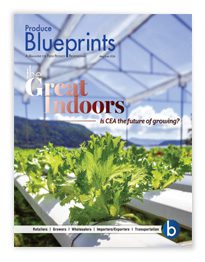Luckily, the delay had little impact on vegetables. It was quite a different story for some in the fruit trade, however, as wine grape growers suffered major losses due to a warm up in December followed by sharply freezing temperatures. Some growers lost more than 90 percent of their least-hardy grape varieties, with an Ohio State University viticulturist calling it “the worst grape damage on record in Ohio.”
Some growers are trying to outsmart Mother Nature through the Central Wisconsin Windshed Partnership (CWWP), a cooperative of farmers, state agencies, and university personnel from the University of Wisconsin. Like its name suggests, the organization’s services revolve around wind control and mitigating its sometimes harsh effects on land and crops.
The CWWP’s primary defense is planting tree ‘windbreaks,’ which act as natural barriers to protect crops and prevent erosion from soil and dust in the summer and fall, and blowing snow in the winter and early spring. A number of Wisconsin vegetable growers have joined the group to protect their fresh market and processing crops.
Sustainability & Food Safety
While there is increased demand for sustainability, such measures involve added expenses that can’t necessarily be passed along to the consumer in the short-term. Because commodity prices tend to fluctuate, upcharging the immediate cost of sustainability is not always practical. And though beneficial to the public, food safety initiatives continue to add pressure to growers, shippers, and suppliers due to the costs associated with compliance.
From farms to retailers, businesses have to observe expanding regulations for worker safety, pesticide spray programs, cleanliness, and tracking systems. Customers are not always aware of the extra costs growers are absorbing due to food safety and traceability, which includes additional staff, equipment, and software. Blomberg says, “The bottom line is that most of these expenses trickle down to the grower and can’t be passed along.”
Adding to the challenges of growing fruits and vegetables in the Midwest is that U.S. farm expenditures continue to rise nationwide, with a 2 percent increase overall for 2013 over 2012 according to the USDA National Statistics Service (NASS). Unfortunately for the Midwest, which already accounts for the nation’s highest proportion of production costs, the region also saw the sharpest climb in annual production expenses, up $3.7 billion from 2012.
For 2013, total farm expenditures for the Midwest were $118.5 billion, putting added pressure on growers and the rest of the fresh produce supply chain. Luckily, there is a sliver of silver lining as farm land values also increased over the last few years, with NASS reporting an 8.1 percent rise in real estate values in 2013 over 2012, with a national average of $2,950 per acre.



